‘It’s high time for you to give fermented foods a try.’
A minute had passed but Yasmin was still looking at me with an ‘OMG she’s gone crazy!’ bewildered look on her face.
I had just told her that it was high time for her to introduce fermented foods in her diet.
I get it.
The words ‘fermented food’ usually conjure up images of spoiled foods with maggots oozing out from everywhere. At least that’s what many patients have told me.
But don’t be spooked – fermented foods are absolutely delicious. And if you prepare them properly, you won’t get any maggot infestation.
Now you’re probably thinking ‘Why the heck would I want to eat or make fermented foods?’ Well, because the store-bought versions are super expensive and barely hold any nutritional value. That’s because most commercial fermented foods are pasteurized.
In this article, you’ll learn why fermented foods are your health allies and how to make your own for a few bucks.

Fermented foods: Definitely not something new
Did you know that people have been fermenting foods for centuries?
If you’re into historical facts, the following is just for you:
- 5400 B.C.: Iranians were using fermentation to prepare wine
- 5000 B.C.: Milk fermentation in Babylon
- 4000 B.C.: Lacto-fermented cabbage in China
- 3000 B.C.: Egyptians used leaven (now called yeast) to raise bread dough
- 2000 B.C.: Production of pulque, an alcoholic beverage, in Mexico
Granted, back in the days, our ancestors would use fermentation mostly to preserve and prepare foods. However, in 76 C.E., the Romans suggested that consuming more fermented milk could reduce gastrointestinal infections .
Moreover, as from the first century C.E. to the late 18th century, travelers have been relying greatly on fermented cabbage (known as ‘sauerkraut’) to keep intestinal infections at bay. They also used to consume fermented foods to reduce the risks of scurvy, a disease caused by a vitamin C deficiency.
What happens during fermentation?
During fermentation, the natural bacteria and certain yeasts present in the food start feeding on the sugar or starch present in that food. During their feast, these microorganisms convert this sugar or starch into lactic acid through a process known as lacto-fermentation.

The 7 main types of fermentation
-
Vinegar fermentation
– You’ve probably experienced vinegar fermentation if you ever left a bottle of wine open for too long. Or if you’ve tried apple cider vinegar, wine vinegars, or coconut vinegar. In a nutshell, when alcohol is exposed to oxygen, a family of bacteria known as Acetobacter convert the alcohol into acetic acid, or vinegar, through a process known as vinegar fermentation.
-
Alcohol fermentation
– During this type of fermentation, yeasts convert the sugars in fruits into alcohol and carbon dioxide in an oxygen-free environment. For instance, fermenting the natural sugars in sugarcane will yield rum.
-
Cultured vegetable protein
– Legumes such as soybeans are often exposed to specific bacteria that ‘pre-digest’ the food to produce a product (like tempeh). The fermented product is easier to digest and is often used as a meat substitute.

-
Meat-flavored fermentation
– This type of fermentation, which originated in Asia, involves soaking, mashing, and cooking certain grains and legumes (like soybeans) before fermenting them to prepare sauces and pastes. Examples include soy sauce, Vietnamese mam, Malaysia belachan, Indonesian trassi, miso, and shoyu.
-
Alkaline-fermented foods
– These foods typically have a strong smell since the raw ingredients release ammonia when they are fermented. Examples include Japanese natto made from cooked soybeans and ugba from African oil beans.
-
Leavening
– Since over 6,000 years ago, naturally occurring yeasts and bacteria known as Lactobacilli were used to ferment grains like wheat ! The fermentation allows the dough to rise and creates a slightly sour dough.
-
Lactic acid fermentation
– This type of fermentation, described above, provides the most health benefits. As such, this article will focus mainly on lactic acid fermented foods.

Health benefits of fermented foods
Why would anyone want to ferment foods when we can now easily refrigerate and cook foods?
Simple: fermented foods add flavor to the diet while also preserving the food and detoxifying it. Moreover, unlike pasteurization which kills off beneficial bacteria and enzymes, fermentation enriches the food by increasing these bacteria and enzymes.
Plus, they also have various health benefits which I will briefly describe below.
Benefit #1: Traditionally fermented foods can improve digestion.
If you’ve read my previous articles, you’re probably aware that a lack of stomach acid is behind most digestive issues (read heartburn, bloating, constipation, diarrhea, belching, and acid reflux).
Consuming fermented foods can help the stomach produce more acid and digestive enzymes that are crucial for optimal digestion.
What about if you’re one of the very few people who has too much stomach acid? Well, fermented foods could prove to be a great addition to your diet as well.
You see, the beneficial bacteria (known as probiotics) in these foods will help protect your stomach and intestinal lining while toning down inflammation.
Moreover, consuming fermented foods can help your body produce more acetylcholine (a neurotransmitter or brain chemical). This acetylcholine can help make things move better in your bowel and thus alleviate constipation.
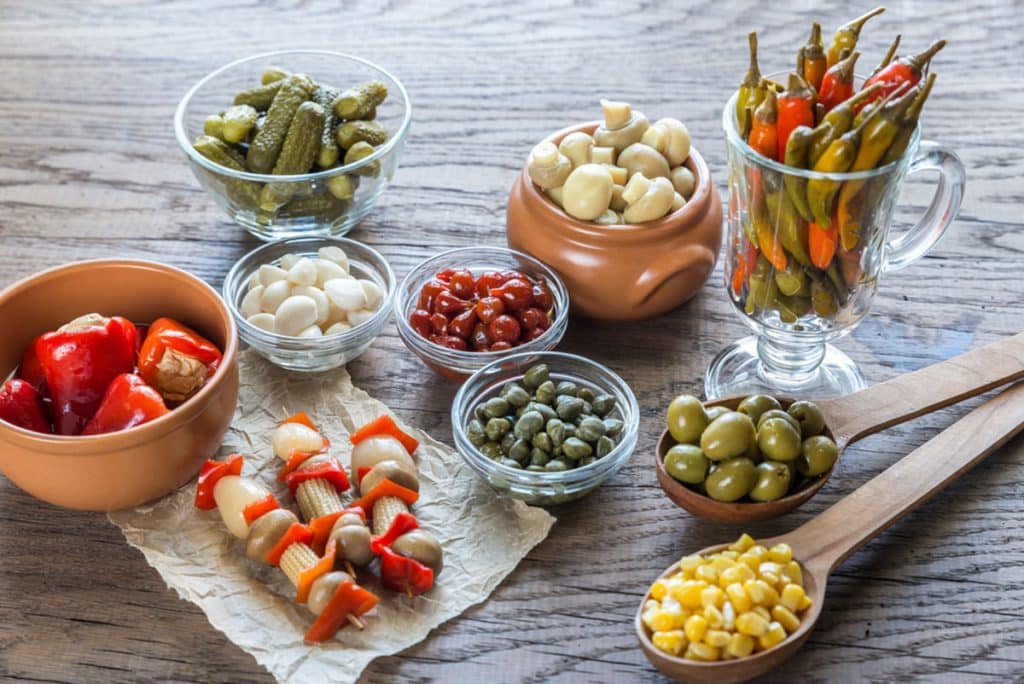
Benefit #2: Traditionally fermented foods can reduce risks of certain cancers.
Lab studies indicate that Lactobacillus acidophilus, probiotics found in certain fermented foods can help reduce formation of polyps, adenomas (benign tumors), and colon cancer.
Lactobacillus salivarius, another probiotic, has been found to suppress AND eradicate Helicobacter pylori, the bacteria behind many incidences of stomach ulcers and cancer.
Benefit #3: Traditionally fermented foods may help control your blood sugar levels.
Besides improving the function of the pancreas, probiotics can boost immune function which often declines when blood sugar levels are uncontrolled.
And the weaker your immune system is, the more likely your blood sugar levels will be out of whack.
Moreover, the sugars and starches in fermented foods are ‘pre-digested’. As such, they do not put extra burden on the pancreas.
Benefit #4: Traditionally fermented foods can enhance brain function.
An increasing number of studies are showing that probiotics can:
- Reduce inflammation in the gut – this, in turn, decreases brain inflammation.
- Act on the vagus nerve, helping you to feel calmer.
- Improve cortisol levels – high levels of this hormone can make it harder for you to deal with stress and more likely to feel anxious and depressed.
- Help the body produce actetylcholine – declining levels of this neurotransmitter, or brain chemical, can adversely affect short-term memory causing memory losses.
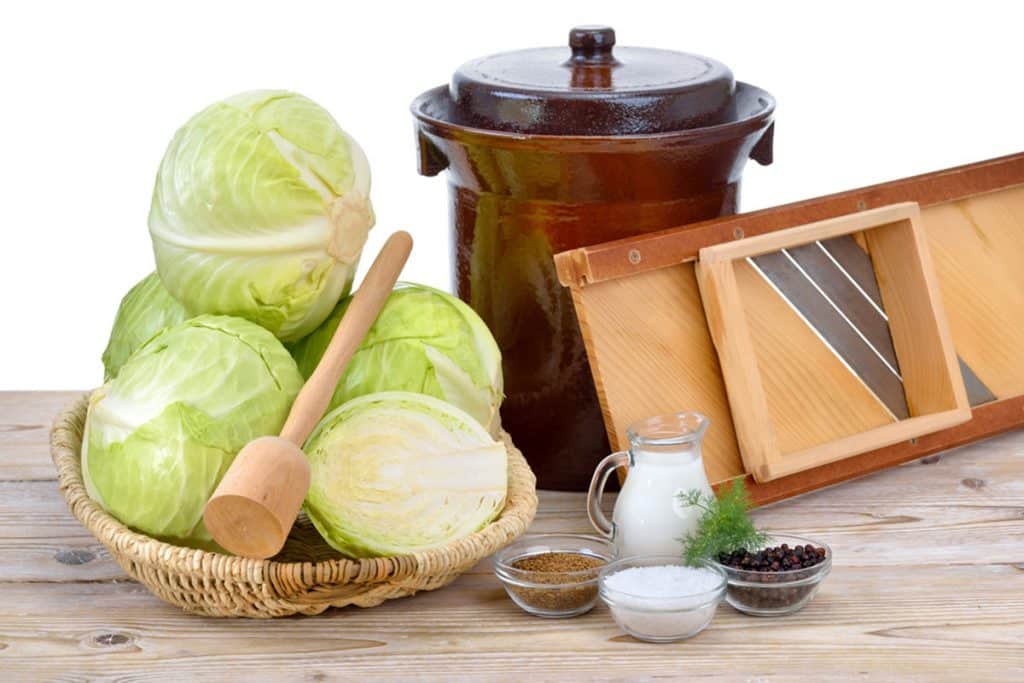
Benefit #5: Traditionally fermented foods may improve nutrient absorption.
As mentioned earlier, fermentation improves enzyme function. This can, in turn, make it easier for your body to extract and use nutrients in the food you consume.
In other words, including fermented foods in your diet can save you a great deal of money since you won’t need to purchase many supplements.
Benefit #6: Traditionally fermented foods can ward off many diseases.
Have you heard of the early 1950s typhoid fever epidemic in Europe?
Well, German researchers discovered that fresh sauerkraut (fermented cabbage) contained a strain of lactic acid that was effective in killing the bacteria behind the epidemic.
It turns out that the lactic acid altered the gut environment, making the typhoid bacteria unable to thrive.
For more information on how probiotics can promote good health, check out this evidence-based article. This article will tell you everything you need to know about probiotics.
Fundamentals of fermentation
The equipment you’ll need
You can use any crock or jar you have but make sure to use only glass or ceramic. Since fermented foods are slightly acidic, plastic may leach into the ferments. Metal containers can prevent fermentation and can even corrode.
Or you could search online for a fermentation device fitted with an airlock and weighted lid such as those from Cultures for Health. These are usually very cheap and yield good results.

Do you need whey? Or vegetable starters?
This depends on your taste preference and how fast you need the ferments – using whey or other starters really speed up the fermentation process.
Moreover, if you have or suspect a yeast overgrowth, SIBO or other gut issues, you may want to avoid wild ferments (that is, ferments that rely on bacteria in the environment). In these cases, you may want to look into vegetable starters such as those from Body Ecology or Cultures For Health which have specific strains of bacteria.
I usually don’t use either whey or starters. I’ve spent years fermenting various veggies and I am happy with letting natural bacteria on the veggies (and on my hands) take care of the whole fermentation process.
Storing fermented foods
Do you have a cold root cellar? This was the traditional method for storing fermented foods and would be a great place to store your ferments.
But, if like me, you don’t have a root cellar, once you’re happy with the taste of the fermented food, just refrigerate it. The cold temperature will make the bacteria ‘sleepy’ – this will slow down the fermentation rate.
I usually let my veggies ferment for about a month (with regular ‘spot checks’) before transferring them to the fridge in smaller, date labelled, mason jars.
You can also culture your ferments for 7 to 10 days only.
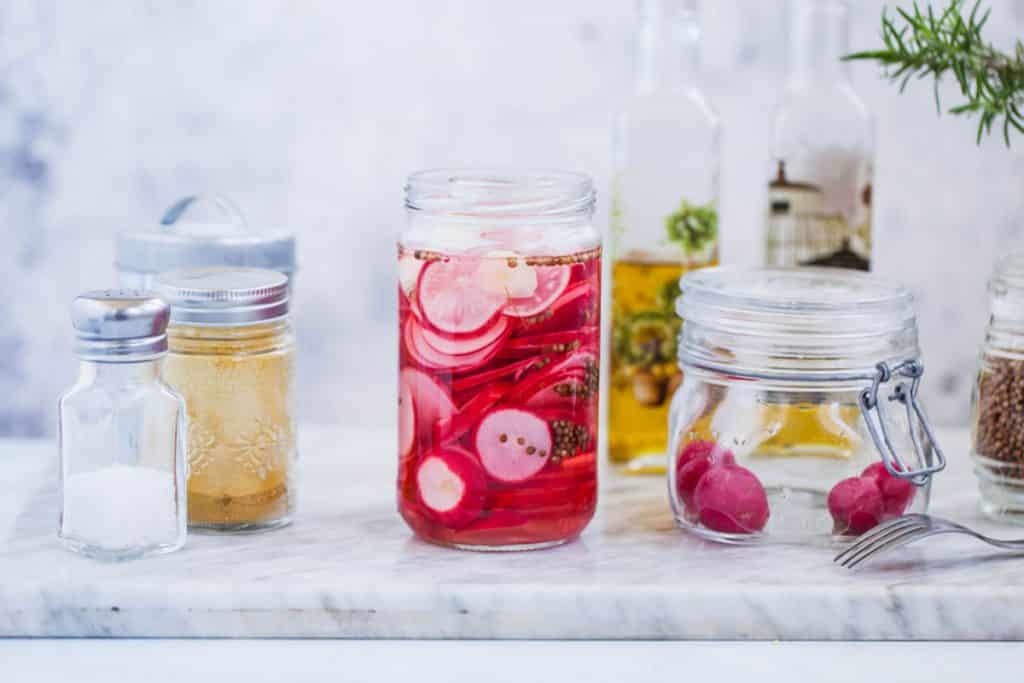
How long can fermented foods be stored?
Much longer than you think:
- Salsas and pickled vegetables – about 4 to 6 weeks
- Sauerkraut – about 6 months
- Sour beets and turnips – about 1 year
- Pickled garlic and capers – about 2 to 3 years!
Of course, if your ferments start smelling bad, tasting bad, or feeling slimy, then it has probably gone bad.
Should you pasteurize your ferments?
According to the USDA, you should either pasteurize or can fermented foods.
But keep in mind that bot processes will result in a considerable loss of:
- Beneficial bacteria
- Food enzymes
- Nutrients
- Vitamins
Again, should you choose not to pasteurize or can your ferments, make sure to check that they are still fit for consumption.
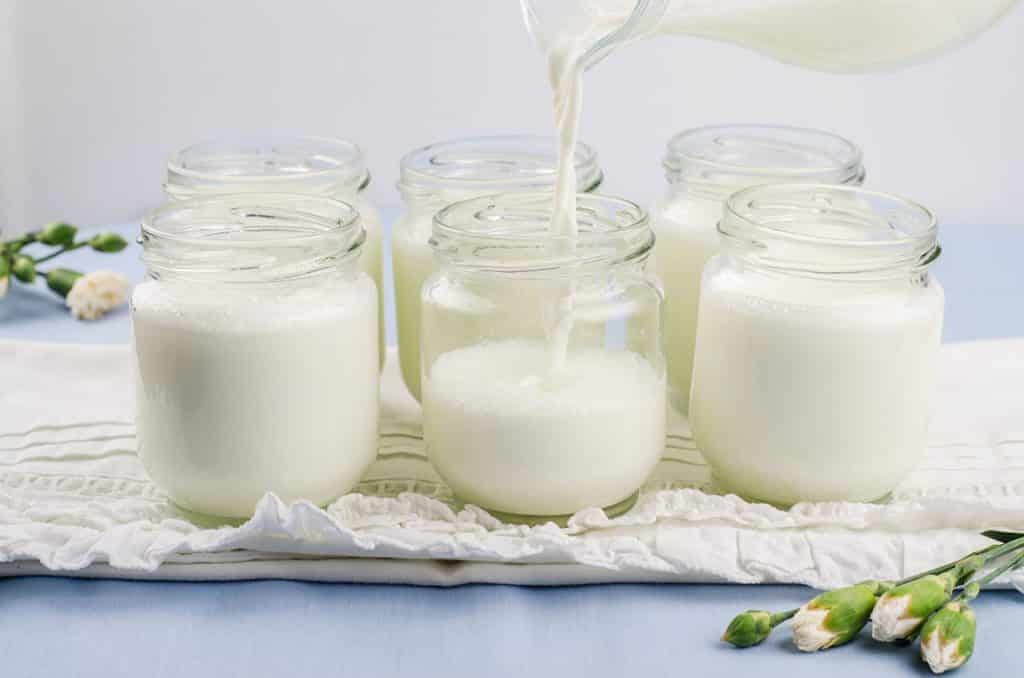
Preparing the fermentation liquid
The brine, or the fermentation liquid, is really easy to make. Simply mix 2-3 tablespoons of unrefined sea salt in 1 quart filtered water. Pour this liquid over the veggies you’ll be fermenting ensuring that they are fully submerged below the salt water.
Fermentation success tips
- Make sure to discard any bruised, molded, or weird looking veggies as these can cause your ferment to go bad.
- The veggies must be fully submerged below the brine during the entire fermentation process. Otherwise, they could get moldy.
- Do not boil the brine after the fermentation process since this would kill the probiotics. And considerably reduce the health benefits of your ferments.
- Use just enough salt – take into account how much veggies you’ll be fermenting. I use the following as a rough guide:
– 8 tsp salt per 5lb vegetables
– 5 tsp salt per 2 ½lb vegetables
– 2 tsp salt per 1lb vegetables
– 1 tsp salt per ½lb vegetables
– ½ tsp salt per ¼lb vegetablesWho shouldn’t eat fermented foods?
Fermented foods can cause problems if you have any of the following issues:
- A mast cell activation disorder (MCAD), more commonly known as histamine intolerance. That’s because fermented foods are naturally rich in histamine.
If your body cannot break the histamine fast enough, the histamine can accumulate in your body causing symptoms like headaches, migraines, muscle aches, brain fog, skin rashes, and digestive issues.
- Small intestinal bacterial overgrowth (SIBO) – Only a very small number of people with SIBO need to avoid fermented foods as they do not respond well to D-lactate—an acid produced by some probiotic bacteria, including lactic acid bacteria like Lactobacillus acidophilus.

However, if you know you have SIBO, or you regularly experience constipation, belching, bloating, you may want to proceed with caution should you choose to eat fermented foods.
I highly suggest that you start with a teaspoon of fermented foods per day and monitor any symptoms you may start experiencing. If you start feeling worse, fermented foods may be doing more harm than good in your case.
The same applies if you have been diagnosed with an autoimmune condition such as lupus, scleroderma, multiple sclerosis, or arthritis.
But again, not everyone with SIBO needs to avoid fermented foods.
Note: Make sure to read the section on kombucha (below) before giving it a try.
Top 7 fermented foods and how to prep them yourself
1. Pickled veggies
Want to add some bang to your meals? Try the following pickles (clicking on the recipe’s name will take you to the website where the recipe is posted).

Pickled garlic
– Very easy to make, pickled garlic is an easy way to get more raw garlic and probiotics in your diet if you’re trying to protect your ticker. You can also add some pickling spice and a bay leaf to your fermentation jar. Culture at room temperature for 7 to 14 days.
Pickled Jalapenos
– These long, pickled peppers are the perfect fit for anything that needs spicing up. You’ll know they have nicely fermented when the color changes from bright green to yellow green. Culture at room temperature for 6 to 10 days.
Sour pickles or pickled cucumbers
– Unlike commercial pickles that are often mushy, these sour pickles are vibrantly crunchy with a lightly tart flavor. Culture at room temperature for 5 to 10 days. The following tips will help preserve the cucumbers’ crunchiness:
– Discard the stems and the flowers since the cucumber’s end contains enzymes that soften the pickles
– Select organic, unwaxed cucumbers
– Add a teaspoon of loose black tea leaves, oak leaves, grape leaves, or horseradish leaves to a half-gallon jar. These leaves contain tannin, an antioxidant that will keep the cucumbers crunchy during fermentation.
– Ferment your cucumbers during cooler months. Otherwise this article will help you keep your ferment cool during the summer.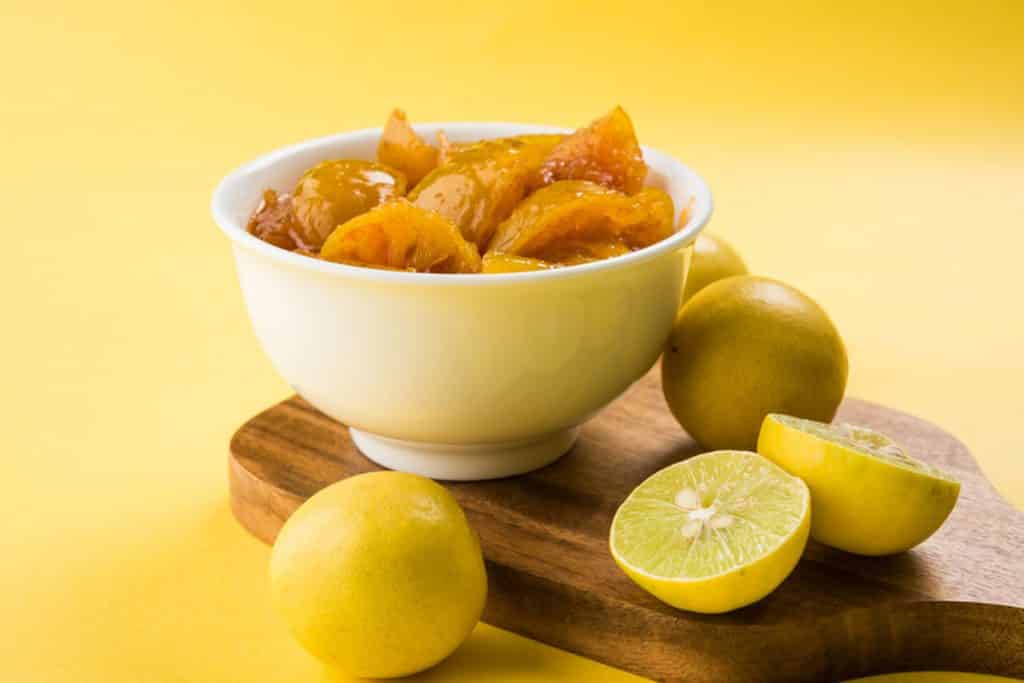
Preserved lemons
– For a subtle but original spicy twist on these classic preserved lemons, add two cinnamon sticks, one fresh (or dried) whole red chili pepper, and about 10 split cardamom pods. Culture at room temperature for 7 to 14 days.
Chanh Muõi
– These Vietnamese preserved limes, traditionally added to sour sodas, are prepared just like preserved lemons. Culture at room temperature for 7 to 14 days. You’ll know your limes are ready when they turn from bright green to dull yellowish green.
You may also skip the step where the limes are boiled. In that case, simply follow the ‘preserved lemon’ recipe above – use limes instead of lemons.
Most recipes will tell you to crush the fermented lime over ice, add a heaped spoon of sugar, and some club soda for a ‘refreshing’ drink. I highly suggest you skip the sugar and add pieces of fresh fruit or a teaspoon of raw honey instead.
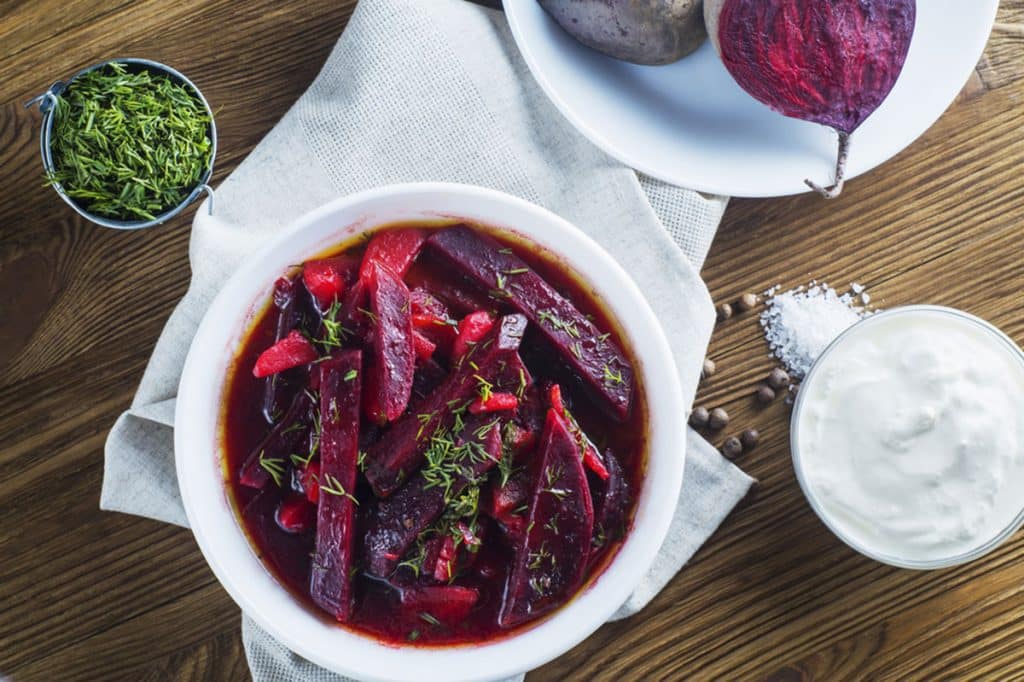
Sour beets
– Naturally sweet with a slightly tart flavor, sour beets pair really well with cold meats and punchy cheeses. They’re also a great addition to salads. Culture at room temperature for 7 to 10 days.
2. Basic Sauerkraut
Sauerkraut simply means ‘fermented cabbage’. If you feel adventurous, you can add caraway seeds or garlic bulbs to your fermentation crock. Culture at room temperature for 10 to 14 days.
I also like adding shredded carrots and red cabbage for a more colorful version.
3. Curtido
A Latin American version of the basic sauerkraut, curtido consists of cabbage fermented with shredded carrots, onions, Mexican oregano, crushed red pepper, and garlic. Some versions also include 1 to 2 tablespoons of cumin seeds. Culture at room temperature for 7 to 10 days.

4. Bavarian Sauerkraut
This very unique version of sauerkraut includes fresh apples, juniper berries, and caraway seeds. Culture at room temperature for 6 to 10 days.
How to tell when your sauerkraut is ready
Some people will tell you that ‘the longer you ferment your veggies, the most benefits you will get’.
The truth is that fermenting for too long can reduce the probiotic content of your ferment if these friendly bugs run out of food. While fermenting cabbage for several weeks may decrease the health benefits of the sauerkraut, it will still be safe for consumption.
In a nutshell, if you’re using only cabbage, it will need about 7 days to ferment at room temperature. If the temperature is below 68°F (20°C), you want to extend the fermentation to about 10 to 12 days.
As mentioned earlier, once the veggies have nicely fermented, make sure to refrigerate them. This will slow down the fermentation process and preserve the probiotics present in the ferment.
If you’re more of a visual learner, check out this video which will guide you through the sauerkraut-making process.
Taste test:
You’ll know your sauerkraut is ready when it tastes sour and tart (like pickles). That’s a sign that the friendly bacteria have eaten the sugars in the cabbage and that the fermentation has increased the ferment’s probiotic count.
Appearance test:
By day 3, you should start seeing a few nice bubbles on your ferment unless the temperature is cold. The cabbage will rise up the jar or float at the top and the liquid at the bottom of the jar will look cloudy. These are all signs of a normal fermentation.
5. Kefir
Pronounced KEE-fur or Kuh-FEER, kefir is a millenary-old fermented milk that has been around for millenaries. Kefir is creamy, at times bubbly, and resembles very liquid yogurt.
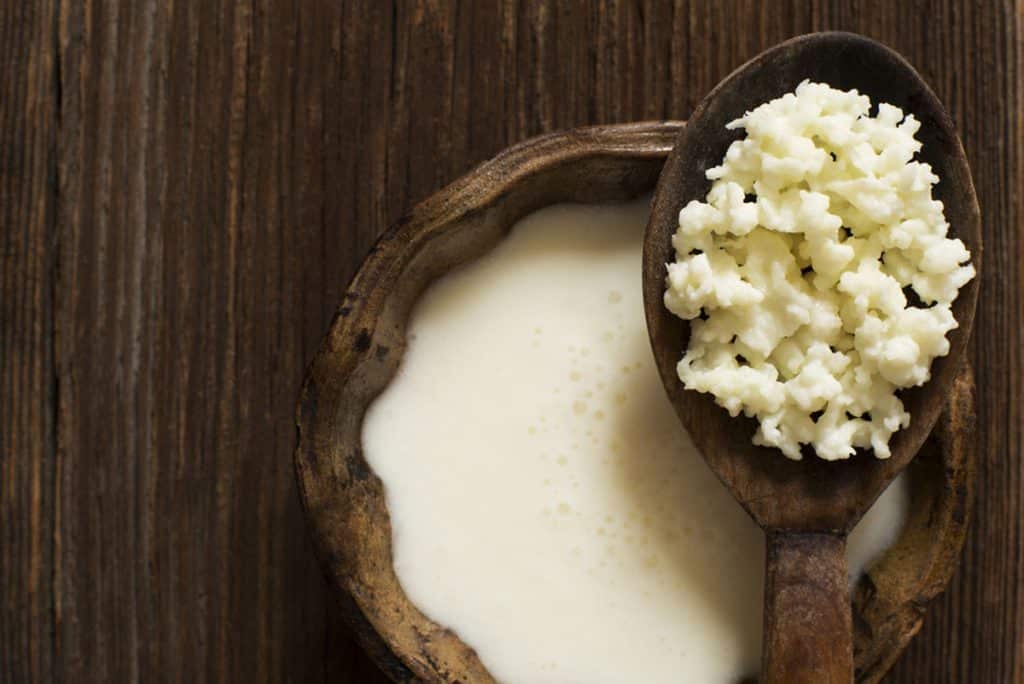
But, unlike yogurt which contains between 7 to 10 strains of beneficial bacteria, kefir can contain around 30 to 56 strains of friendly bugs! Moreover, the bacteria in kefir are special. You see, they can take up residence in your body and contribute to a healthy gut flora.
Health benefits attributed to kefir
Many of my patients who have started consuming kefir on a regular basis happily reported the following:
- Improved blood pressure levels: During fermentation, some bacterial strains can produce substances that dilate blood vessels, thus lowering blood pressure.
- Controlled blood sugar: Kefir contains various enzymes and lactic acid that can regulate sugar metabolism.
- Reduced inflammation
- Improved digestion: Compared to sugar which is about 4% sugar, kefir is only 1% sugar.
- Regular bowel movements
- Greater resistance to the cold and flu
- Improves quality of sleep
6. Sauerruben
Sauerruben is just like sauerkraut except that it is made using turnips instead of cabbage. Some people also use rutabagas or a combo of turnips and rutabagas. Culture at room temperature for 7 to 10 days.
7. Kimchi
This traditional Korean fermented dish is composed mostly of napa cabbage and daikon radish. Usually served as a side dish, Kimchi is also often added to various cooked dishes. Some recipes also call for fish sauce or chili paste but these are for the less tame palates. Culture at room temperature for 7 to 10 days.
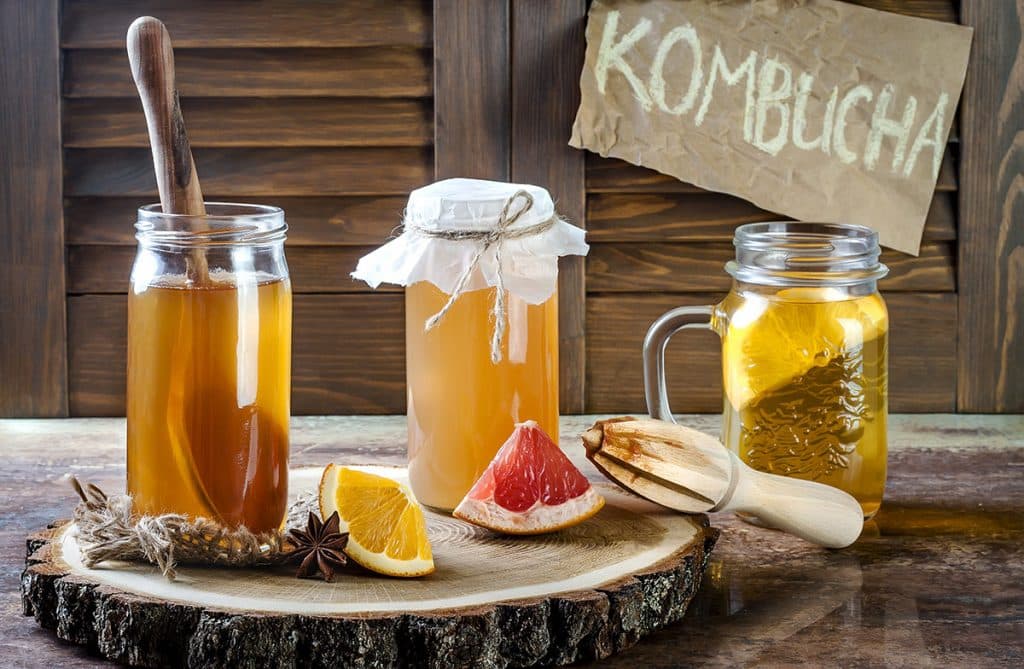
How about kombucha?
First things first: What is kombucha?
In a nutshell, kombucha involves fermenting tea sweetened with white sugar for a week in the presence of a SCOBY (Symbiotic Culture Of Bacteria and Yeast). The SCOBY looks like a mix between a jellyfish and a flattened mushroom. But it is actually solid and squishy.
And it is very much alive. This is why you need to use sweetened tea since the SCOBY thrives on the sugar and drives the fermentation process.
So why did kombucha not make the list above?
After all, doesn’t it have many health benefits like improving digestion, reducing headaches, and boosting energy levels?
Yes, but kombucha also contains:
- A small amount of alcohol
- Some sugar (yes, the SCOBY will feast on the sugar but some will remain in the drink)
And guess what? Both alcohol and sugar can cause issues if you have a candida or bacterial overgrowth.
Moreover, kombucha is known as a ‘wild ferment’. That’s because its composition will depend on the bacteria present in the SCOBY.
Unfortunately, you may poorly tolerate kombucha or other wild ferments if you are battling:
- Small intestinal bacterial overgrowth
- Irritable bowel syndrome
- Candida overgrowth


